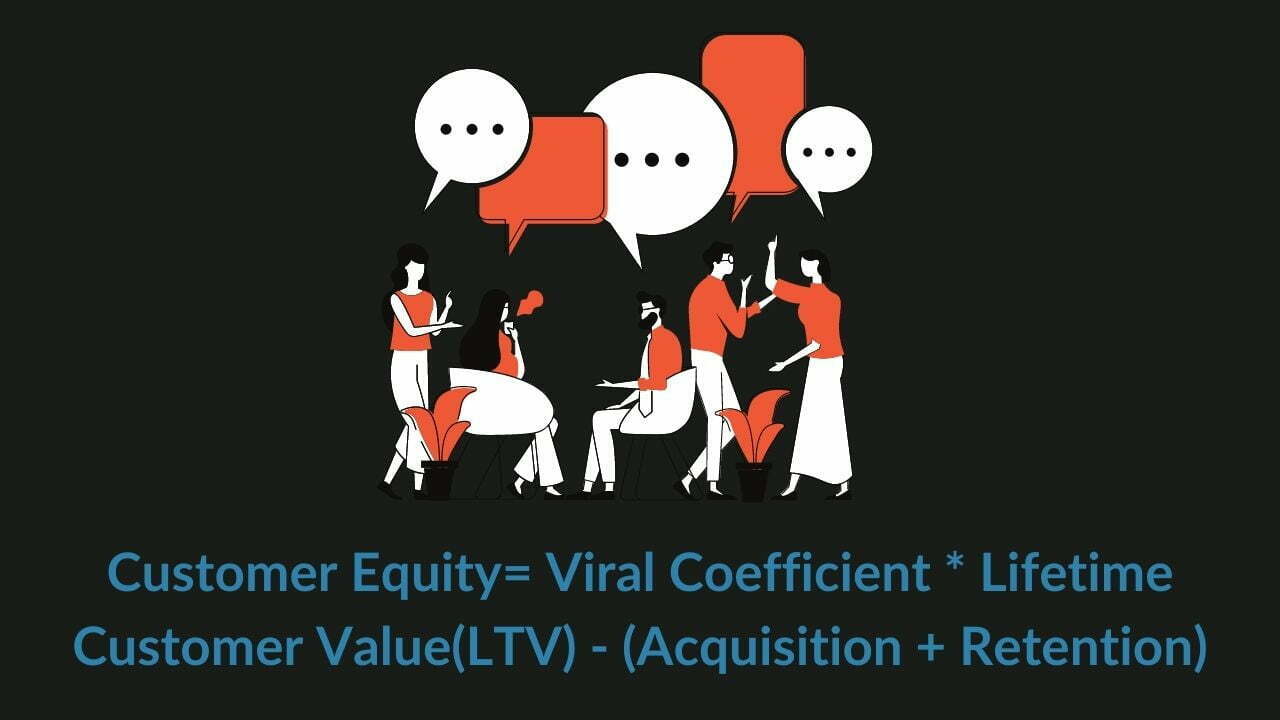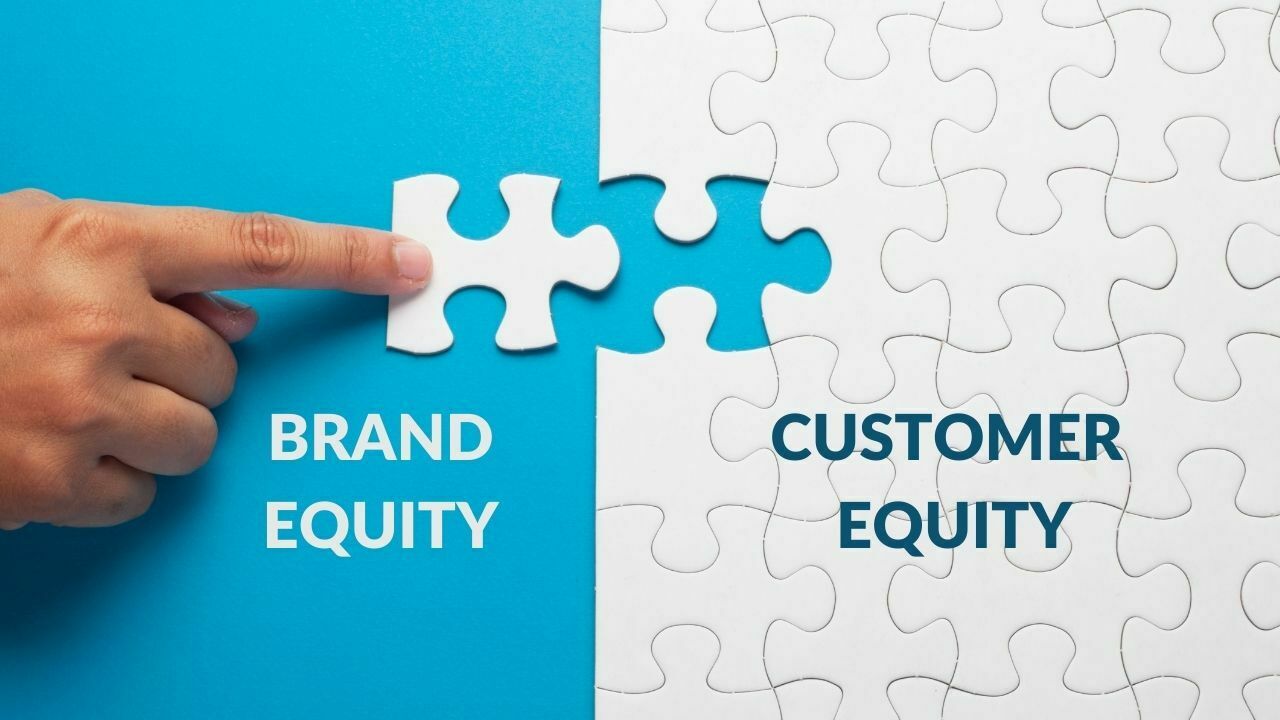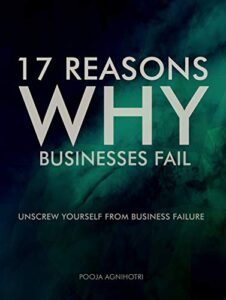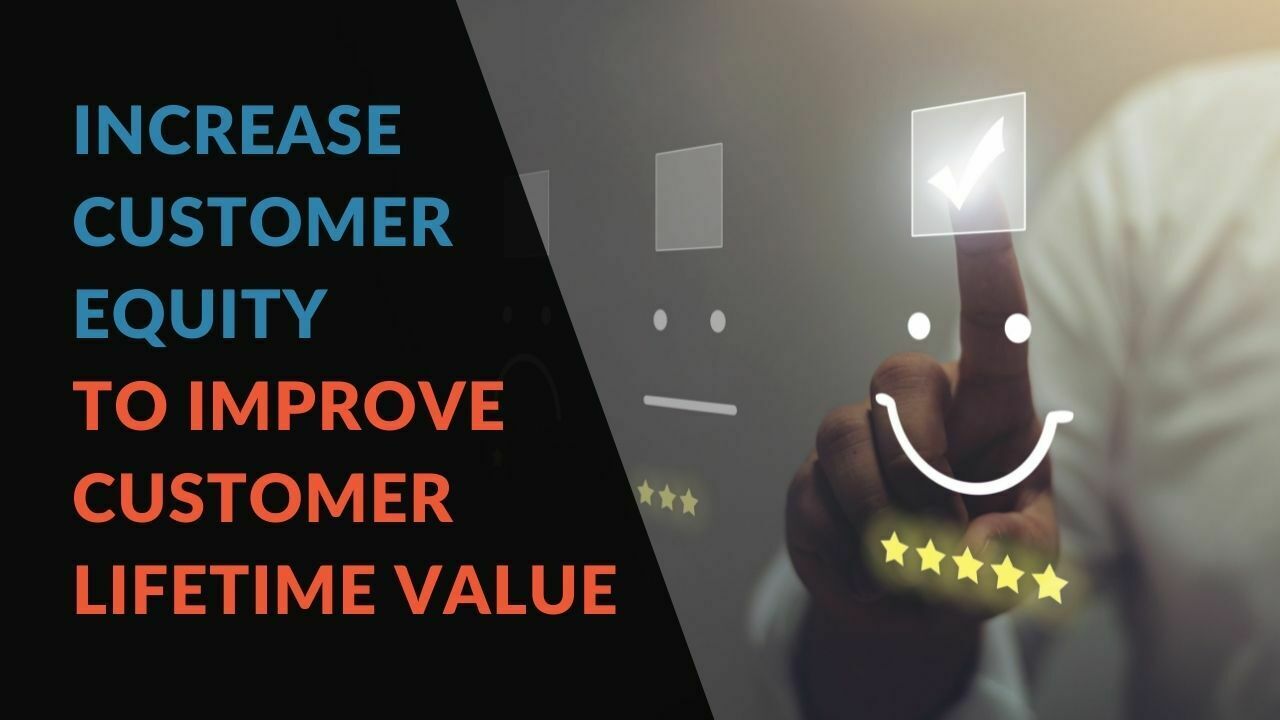In this blog, we’re going to learn why and how to increase customer equity and customer lifetime value. Other areas covered are the importance of customer equity, why customer equity is not the same as market share, and what differentiates customer equity from brand equity.
How do you measure the growth of your business?
- By the size of your office?
- Or by the number of branches you have?
- Maybe by the number of employees you have?
- Or by your market share?
If your answer was yes to any of those, then you have not yet adjusted your marketing strategy to match the speed of the 21st century.
To your surprise, if analyzed the right business growth data –
A business having no office can be much bigger than a business having headquarters in Manhattan, New York City.
Similarly, a business having just 1 person can also be much bigger than a business having a team of 50.
If you have to measure the size of your business, start by measuring your customer equity.
Customer equity is the only metric that will show you the complete and correct picture of your business.
What is Customer Equity? Is It the Same as Customer Lifetime Value?
Customer equity is the lifetime value of your current and future customers. Share on X
The number of loyal customers is one of the factors that determine the value of your customer equity.
In simple terms, customer equity refers to the total of the discounted lifetime values of the organization’s customer. The more loyal customers you have, the more customer equity you have.
If all the attributes remain the same, a business having high customer equity is going to lead the business race to the top.
There are mainly three drivers of customer equity – value equity, brand equity, and relationship equity.
It can be calculated as:
Customer Equity= Viral Coefficient * Lifetime Customer Value(LTV) – (Acquisition + Retention)
Viral coefficient here is the number of users or referrals a user can generate for you.
Customer equity is the concept that encourages the organization to consider their customers as a major part of their cash flow both in present and in the future. This is the key motive of the marketing strategy that an organization follows.
Moreover, to maintain customer loyalty the brand needs to come up with innovative ideas and also work consistently to improve the customer experience.
Harley Davidson is one such example of a brand that has high customer equity.
As compared to other motorcycles, Harley Davidson has a big community of loyal customers.
As a result, it has higher customer equity when compared with other market players.
Brand Equity vs Customer Equity: Which One Matters the Most?
Brand equity and customer equity are two separate things. In fact, brand equity is a part of customer equity.
As brand equity is a part of customer equity, if you want to increase your customer equity, you would have to increase your brand equity as well. They are directly related to each other. One’s value is going to affect the other’s value.
The common thing between customer equity and brand equity is that both emphasize customer loyalty towards the brand and both pay importance to the value that customers add to the brand.
But conceptually both are different.
Customer equity emphasizes more on the financial gains from the customers while brand equity is about strategic issues related to managing a brand.
Also remember, customer equity is quantitative while brand equity bends more towards the qualitative aspect. For instance customer connections with the brand.
Customer equity is made up of three elements and these are:
Value Equity
Value equity is the assessment of the value of a product or service by a customer.
This is the measure of the customer’s perceptions of that product. If the customer perceives the product as one of good quality, having great benefits, and offering great convenience, then that product has good value equity.
It is a customer’s unbiased assessment of what an organization can offer in the market. It is based on perceptions of what customers are willing to or sacrifice for what they receive.
So, value equity is the customer’s assessment based on the offer, its prices, and the convenience it offers. If all three of these match then the organization is said to have high-value equity.
For instance, Mcdonald’s is a fast food item and is available in most places. Its price is also highly reasonable.
Brand Equity
Brand equity is how a customer assesses your brand. If they perceive your brand as good, then you have high customer equity.
It is customers’ subjective and intangible assessment of the brand. It is beyond its objectively perceived value.
The drivers of brand equity are brand awareness, customer attitude, brand ethics, and its perception by customers.
Tools for developing brand equity are advertising, public relations, and a holistic marketing approach.
For instance Starbucks versus other coffees. The price difference between those two is because of the difference in their brand equities.
Retention Equity
Retention equity measures the customer retention rate of a business.
If your customers choose you over other competitive brands, if they still pick you when you are charging higher than others, then you have very high retention equity and also, customer equity.
Retention equity comes to an organization that is good at maintaining personal relations. It makes customers develop a sense of connection with the organization and develops greater retention capacity.
Market share is the percentage of a market a business owns in its specific industry. For instance, Harley Davidson has a market share of 30.6% in the US motorcycles market.
On the other hand, customer equity is the combined lifetime value (LTV) of both company’s present and future customers.
Market share is still a good metric to measure but to mainly measure the past. It doesn’t tell anything about the future.
Like in the case of Harley Davidson, it doesn’t tell whether the customers are still liking its products or not? Whether the number of loyal customers is going up or plunging down?
If you want to measure the future, you have to start calculating your customer equity.
Customer equity will make you aware on time of any tell-tale signs of your business not doing good and whether you need a change in your strategy.
Learnings From the Mistakes of Cadillac: Why is it a must to increase customer equity?
Cadillac made the mistake of measuring its growth by measuring market share and sadly, they are still paying the price of that.
Back in the 70s, Cadillac used to own almost 33.3% of the luxury car market share in the US. But now it has fallen to just a 6.85% share.
If in the 70s and 80s, Cadillac had measured its customer equity, it would have known that even though its market share was high, its customer equity was telling otherwise.
Customer equity would have shown Cadillac that their customer lifetime value was going down. Primarily because all its customers were entering old age and were driving the last car they wanted to own.
There used to be a prevalent joke that all the customers of Cadillac are between the age group of 60 and dead.
As more and more customers entered old age, the possibility of Cadillac selling more cars to them went low. The past of Cadillac shown by its market share was rosy but the future calculated by its customer equity was not.
Market share also failed to warn Cadillac that they were unable to attract young people.
To remain the market leader, they had to include them in their target audience but they learned late and all their attempts at that time failed to do that.
Benefits of Improving Customer Equity
Measuring customer equity is very important for a business as it shows a business, not just the past but also the future. It prepares a business for the future to come.
Customer equity will tell you how much your customers are going to contribute to your future revenue.
If these calculated numbers don’t look good, you have enough time to reanalyze your strategy and bring necessary changes before it’s too late.
Moreover, in today’s market, customer equity plays a very important role. It helps you estimate the financial profit you can obtain from all your customers during your relationship with them.
Improving your customer equity allows companies to estimate their customer asset value and help them to make effective financial decisions regarding add-on selling, retention, and acquisition.
Also, it helps you focus on every customer that helps in strengthening communication. Also, a company’s success depends on its ability to drive more loyal customers.
So, if you want to understand everything about customer loyalty, you need to explore the differentiating factors between customer and brand equity and then seek ideas to improve them.
Both areas have distinctive features and should not be confused.
What is a Customer Equity Strategy?
A marketing strategy formed to improve the customer equity of a business is known as a customer equity marketing strategy.
Customers are your assets, your investments and a good customer equity strategy will increase the value of that investment every year. Share on X
Customer equity is the discounted lifetime value of all the customers of varied firms and it is the result of customer relationship management.
A good customer equity strategy helps indicate how valuable a business is in the market and also in the minds of the customers.
Also, it is a very crucial realm of strategic marketing to understand how to improvise the customer equity of a particular business.
Customer equity strategy also incorporates many measures and ideas that are important to the marketing team of any firm and its profitability distribution.
Another important area of this strategy is that it can be used to estimate the future marketing ROI and also future return on marketing.
4 Expert Ways to Improve Your Customer Equity
If your customer equity is low, then you need a strategy to improve it. It will help you in retaining and growing your market position.
Here are some of the ways you can do it :
Build Your Brand Image
A good brand image means that your customers value your brand. It tells that your products are desirable to your audience and that your customers won’t mind even paying extra to you to get that product.
Building brand image means managing those perceptions that your customers have about your brand. The better those perceptions are, the better will be the value of your customer equity marketing strategy.
Focus On Increasing Trust
Customers will only buy from you if they trust you.
That’s why trust becomes one of the most important assets to build in business.
Remember that your reputation sells your products.
PR including online reputation management should be an important part of your customer equity strategy.
Start Advertising
Many business owners ignore advertising as they see it as a big expense. But advertising plays an important role in the growth of a business. It helps in building trust and increasing brand awareness.
People rarely buy from those companies they are not aware of. They like familiar products as they can trust those products more than others.
And this is the main purpose of advertising – to make people familiar with your brand.
Build Profitable Customer Relationships
One of the ways of building customer equity is by building customer relationships. However, not all relationships prove profitable to a business.
That’s why a business should first figure out what kind of customers are profitable to it and then direct its efforts in building strong relationships with them.
To build profitable customer relationships, start by dividing customers based on two metrics – profitability and loyalty.
Your goal should be to focus on those customers only who are loyal and also profitable to your business. This set of customers will become your free marketing partner in the future.
Those customers who are not loyal and also not profitable to you are not your ideal customers.
You shouldn’t spend your time trying to convert those into your loyal customers.
They are not interested in what you are offering and you are not interested in them as they are not the ones who will bring your business growth.
Key Takeaway: Customer Equity
Customer equity is the outcome of all your relationship-building efforts.
If you implemented a great customer-centric marketing strategy, you will be able to increase the number of profitable customer relationships along with your customer equity.
Customer equity measures how profitable your business is going to be in the future.
It also measures how desirable your business is in the minds of your customers.
Bizadmark specializes in forming marketing strategies that focus on increasing customer equity and not just your market share. To learn more about how we can contribute to your business growth, get in touch with us.
Successful Business Owners Learn from the Mistakes of Others
The secret to success in business isn’t doing what other successful people have done; it’s by avoiding the mistakes made by businesses that have failed. Instead of repeating their mistakes, now we can learn from them and best ensure business growth and commercial success.
17 Reasons Why Businesses Fail brings the cautionary tales of mistakes made by many businesses that ultimately led to their failure and which other businesses should avoid at all costs if they plan to survive and grow. Get your copy.
Others are also reading:











